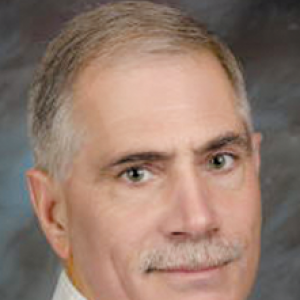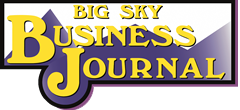By Jose Bustos
“It’s stupendous, it’s monstrous, it’s even humongous,” some may say, for one of the largest portions of an eye-opening Country Fried Steak ever placed upon a plate. One of the fluffiest most flavorful Cinnamon Rolls you’ve ever tied on your tongue to taste. It’s an inch and half thick, and eight and a half inches across, and yet one would say, they “nearly melt in your mouth.” The frosting is subtly sweet, they’re light and delightfully porous, not thick and chewy, a cuisine-like chorus. One comment heard, “Cover one with butter, your tongue will flutter.”
Breakfast ordered with bone in ham is surprising, as the ham slice is 10 inches across. The breakfast burrito is a full 23 ounces, two and a half inches thick, by seven inches in length. One is enough for two to tackle. The hamburgers are a mouthwatering, tummy stuffing 10 ounces, with a toasted bun, lettuce, tomato and condiments to consume. For every visit, I’ve asked for a doggy box. You’ll leave lovingly stuffed with lunch at the Tippy Cow!
The atmosphere is pleasant. The interior motif is relaxing and comfortable. The service is superb. On entry to the foyer, you’ll be pleasantly greeted with a menagerie of Tippy Cow colorful coffee cups, and cute ‘n’ cuddly, Tippy Cow caps. I shouldn’t forget, the staff is pleasant and friendly, merry and mooo-ving.
I had to firstly sing the praise of the most impressive items on their menu and Tippy Cow’s showcased pastries before expounding on the restaurant and staff. It’s lively, dynamic, a family concern, no gambling, no alcohol served, and leisurely dress is part of the theme, hats or caps, plaid shirts and boots, if you so deem. Harkless and his son Tony are hard-working guys, yet are friendly and always ready with a pleasant Western smile. Then… the added accolades, Harkless’ wife Melissa. A ball of bubbly, friendly effervescence, a magnetic smile, and a fun, quick comeback for any smart aleck remark. A welcome that makes you feel as though she’s known you for the last ten years. An added bouquet, Leanna, as she scurries around waiting on customers, with a vibrance, a vivacity, a fun infectious energy. Just meeting the staff is part of a pleasant visit to the Tippy Cow Café.
Harkless had a small successful 10 table café in Portland, Oregon. A planned trip from Portland, back home to visit his mother in Billings turned out to be an unplanned future venture and purchase of the former Golden Phoenix Chinese restaurant. While staying at a motel near the vacant restaurant, and with the mere chance of a glance from the room he was staying in, Harkless saw a For Sale sign posted in one of the windows of the former Phoenix Chinese restaurant. Was it providence, a vision, a fluke, or a touch of serendipity? Harkless can’t explain it, but it turned out to be an unplanned stratagem to move his family out of riotous Portland and himself back to the hometown he loved and missed.
Without a second thought, Harkless called the real estate agent listed on the ad. Due to the unwanted location for a planned marketing business, the real estate agency could not get buyers at the asking price. In an effort to “get rid of it,” the agency accepted what Harkless offered and it was settled. Harkless bought the building without really conferring with his wife, Melissa, with the adage of “asking forgiveness over permission.” He asked her, “would you like to move to Montana?” An emphatic “no” was her answer, as Melissa grew up in Portland and she had never traveled outside of her home state. She’d heard of and feared the brutal Montana winters. But with the political climate and the turmoil it caused in Portland, Melissa thought again about the suggestion, then agreed. Melissa, their son Tony and his fiancé Leanna, decided to chance a new chapter in their lives.
Tony, now The Tippy Cow Manager, and his fiancé Leanna liked the idea to try something new, so they signed on for the move to open a restaurant in a town they knew nothing about. They sold their homes in Portland, and Harkless sold his “D Street Café,” and all moved to Billings in January 2020. They had no idea what their restaurant would look like, or what to name it, but they had what so many successful business owners have, the strength of character, the mettle, the faith in themselves and their dreams. The bonus, the one thing that Harkless had in his pocket, was the successful experience with his café in Portland.
The Tippy Cow Café… now how did the Harknesses come up with that name? While still in Portland, a friend brought him a sign that read, “don’t tip our cows, tip our staff.” For whatever reason, he brought the sign with him, and again, was it serendipity? In the process of remodeling the building, they couldn’t agree on a name for their new venture. Melissa thought “Tippy Cow” was cute. Harkless didn’t like it, but chose five names that included “Tippy Cow” and sent those names to a half dozen friends for their thought, and they ALL chose, yes – “Tippy Cow.” That sign is now part of the Tippy Cow interior, which is located on the corner of Airport Road and Main Street in Billings.
Harkless and family, along with friend Matt Tooley, gutted, then proceeded to remodel the interior, with nothing more than ideas they came up with as they went along. The interior color was pink, and the floor was carpeted, so they had to paint the walls and scrape the floor. The floor was then covered with attractive wood laminate. Harkless calls this their “on the spot designing.” With that they ended up with lots of natural light, augmented with interior lighting, and a soft beige and gray motif. Corrugated lower walls and cultured stone adorn the interior to compliment the flooring, along with accented burnt pine trim.
But then, the tables, the chairs – what will they be? Harkless bought pine wood chairs from a California warehouse at $6 apiece, but could not find a local woodworker to build booths that would match. He was able to find a craftsman in Spokane that was able to match the rustic pattern that matched the chairs. Following the match up of the tables to the chairs, the burnt wood trim was an “on the spot” design that fits neatly with the western rustic look. After weeks of hard work, Harkless comments, “we had fun doing it.”



